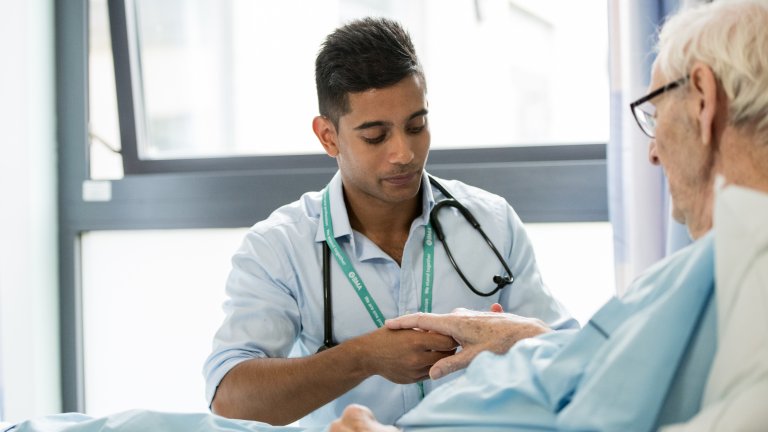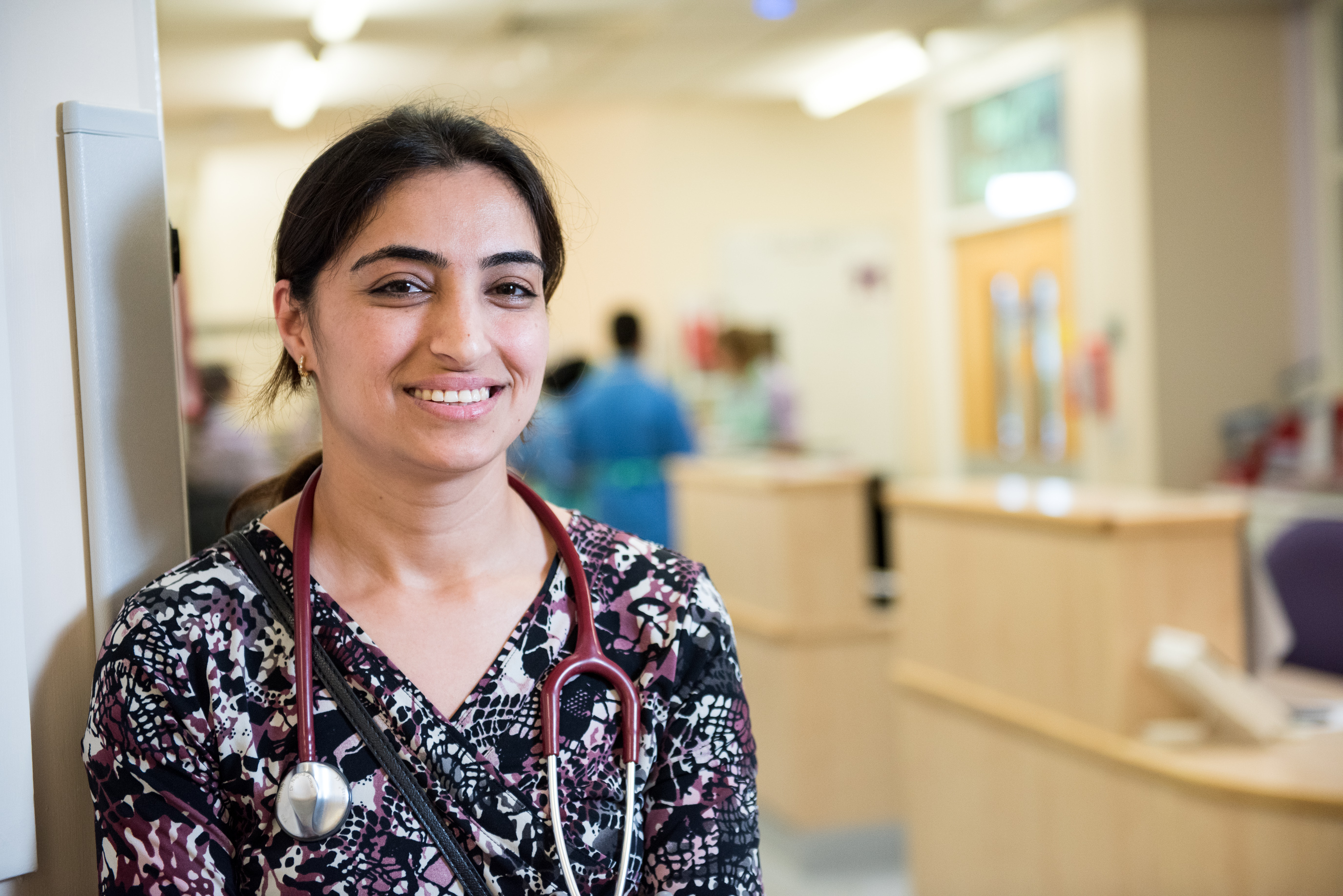Training requirements for higher specialist trainees in geriatric medicine in tissue viability
This page clarifies the training standards for higher specialist trainees in geriatric medicine in tissue viability in the context of the new training curriculum and syllabus.
Wounds to skin and ulcers are an important cause of morbidity and mortality amongst our frail older patients, in hospital in and out-patient settings and the community. Non-healing or delayed healing of wounds is a major factor in care costs and many of these wounds could be prevented or healed more quickly (National Wound Care Strategy Programme, 2021).
Pressure ulcers cause immense suffering and considerable increases in length of stay. An understanding of the contributing factors of pressure ulceration is fundamental to prevention of occurrence. Risk factors can be reduced, early change detected and appropriate management instituted. Engagement with the tissue viability team and understanding of available interventions is essential to this.
Peripheral ulcers represent a great burden both to the patient and to the Health Service. Broadly there are four types of ulcer:
- Arterial ulcers – which are life and limb threatening
- Venous ulcers – which have a high social impact, are difficult, time consuming and expensive to manage and recur
- Diabetic foot ulcers – which are limb threatening and recur
- ‘Other’ – including mixed aetiology, vasculitic ulcers, iatrogenic and malignancies – are difficult to diagnose and challenging to treat.
- Accurate diagnosis, correct treatment and appropriate specialist referral is essential in their effective management.
Geriatric Medicine Curriculum 2022
The new geriatric medicine curriculum details a number of high level curriculum outcomes known as Capabilities in Practice (CiPs). The capabilities in practice (CiPs) describe the professional tasks or work within the scope of Geriatric Medicine. These are articulated in six generic CiPs, eight IM clinical CiPs and seven Geriatric Medicine specialty CiPs which have been mapped to the relevant GPC domains and subsections to reflect the professional generic capabilities required. Each CiP has a set of descriptors associated with that activity or task. Descriptors are intended to help trainees and trainers recognise the minimum level of knowledge, skills and attitudes which should be demonstrated for an entrustment decision to be made.
Tissue Viability is incorporated in Geriatric Medicine CiP 2, which is detailed below along with the specific descriptor of the capability required. Evidence to inform the entrustment decision might take the form of CbD, Mini-CEX, ACAT, SCE, and reflection on clinical cases.
Geriatric Medicine Specialty CiP 2
Managing complex common presentations in older people, including falls, delirium, dementia, movement disorders, incontinence, immobility, tissue viability, and stroke in an in-patient, out-patient and community setting.
- Assesses and manages common types of leg and pressure ulceration, surgical and other wounds in older patients.
Geriatric Medicine Syllabus 2022
|
Tissue Viability To know how to assess, diagnose and monitor common types of leg and pressure ulceration, surgical and other wounds in older patients |
|
|
|
Trainees should link with services out with Geriatric medicine in order to gain the necessary experience and competencies.
Pressure ulcers and peripheral ulcers are multidisciplinary challenges involving teams from several areas including:
- Tissue Viability
- Diabetes
- Vascular Surgery
- Dermatology
- Plastic Surgery
A thorough and holistic understanding of these complex clinical scenarios will benefit from engagement with the above teams. This could be through attendance at clinics, ward rounds, multidisciplinary team meetings and could potentially include visits in a community setting. One or two sessions with each of the five specialty teams defined is recommended. Some of the required knowledge can be gained through tutorials and teaching sessions. SLEs should be completed to evidence acquisition of competencies and aid learning and reflection. Additionally, attendance at, and reflection on, teaching sessions can be linked to the e-portfolio.
Core competencies
The knowledge, skills and behaviours required to assess, diagnose and monitor common types of leg and pressure ulceration, surgical and other wounds in older patients.
- Basic biology and disease processes of ageing skin
- Aetiology, risk factors and pathology of common causes of ulceration, including features of venous and arterial ulceration
- Factors that can affect healing
- Prevention of ulceration, in particular pressure relief
- Risk Assessment Scores for prevention e.g. Waterlow, Norton, Braden
- Principles of wound healing and (where appropriate) stump care
- Nutritional factors (positive and negative) impacting tissue viability.
- Dressings, topical and systemic antibiotic therapy
- Pharmacological and non-pharmacological approaches to managing wounds.
- Indications and techniques for non-surgical and surgical debridement
- Compression treatment, larval and vacuum therapy
- Define features of venous and arterial leg ulceration
- Indications for skin biopsy
Skills
- Physical examination including diabetic foot screening
- Undertake Ankle-Brachial Pressure Index measurement and Dopplers
- Diagnosis of benign or malignant lesions and the reasons for non-healing
- Ability to diagnose the common types of skin ulceration in older people
- Managing scenarios in lipodermatosclerosis, pressure and diabetes
- Ability to understand indication for different dressings and other therapy
- Recognise unusual causes of non-healing e.g. malignancy, vasculitis
Attitudes
- Assesses patients holistically, includes systemic and functional factors
- Promotes effective team working and values the importance of working collaboratively with other members of the multidisciplinary team including nurses, podiatrists, dieticians, Tissue Viability Specialist Nurses, and other members of the wound care team
- Liaises and refers appropriately with other departments such as vascular surgery, plastic surgery and diabetes
Specific Learning Methods
- Observation and discussion with team – tissue viability team, Consultant colleagues, podiatry, ward nurses and therapists
- Attendance at specialist clinics – e.g. leg ulceration, vascular, Plastic surgery, Diabetic foot clinic.
- Attachment to specific departments/teams such as tissue viability team (including community), diabetes foot round

